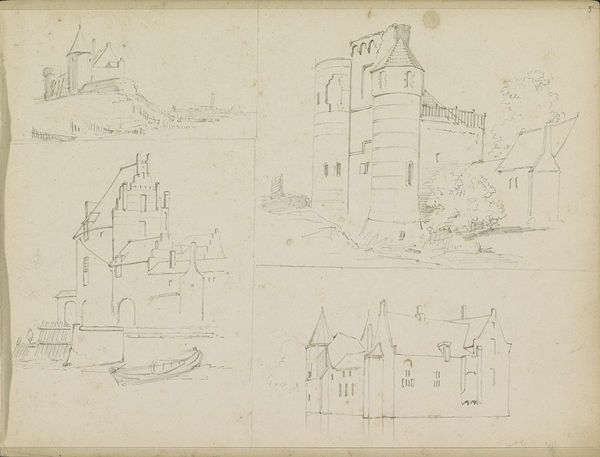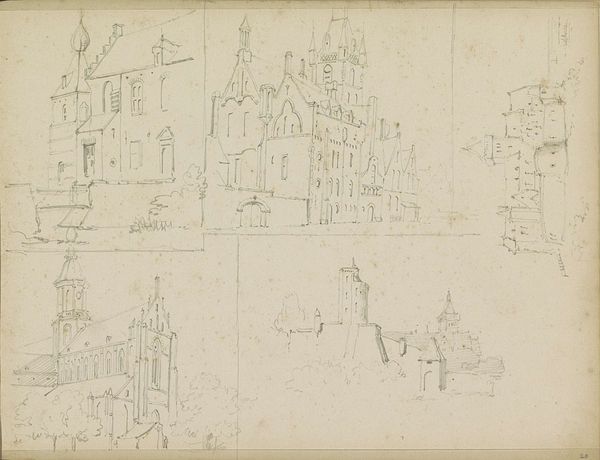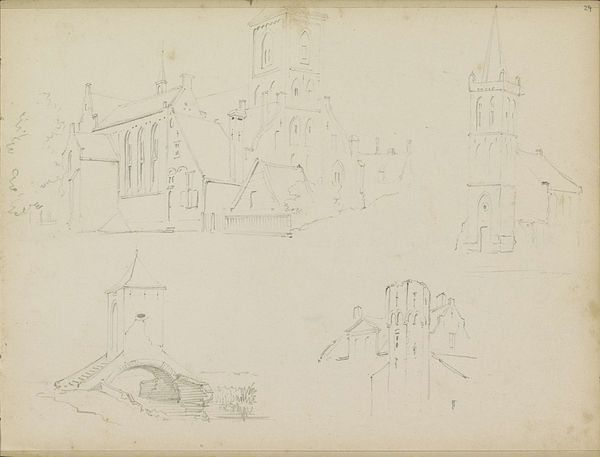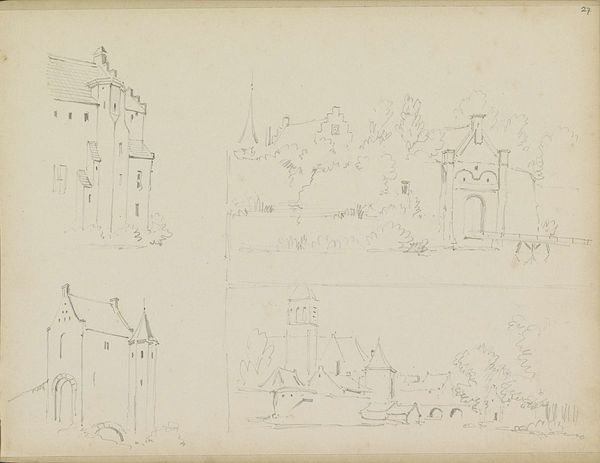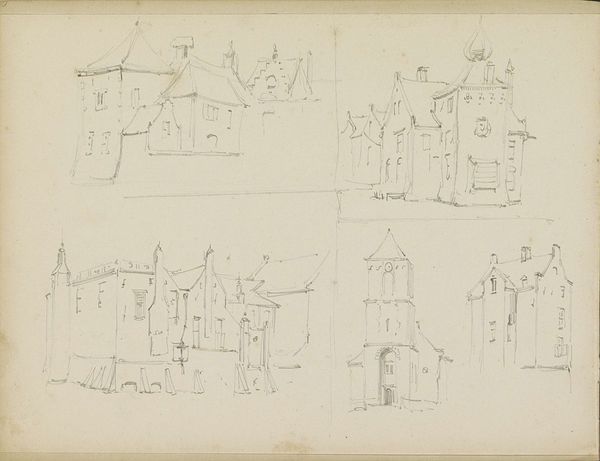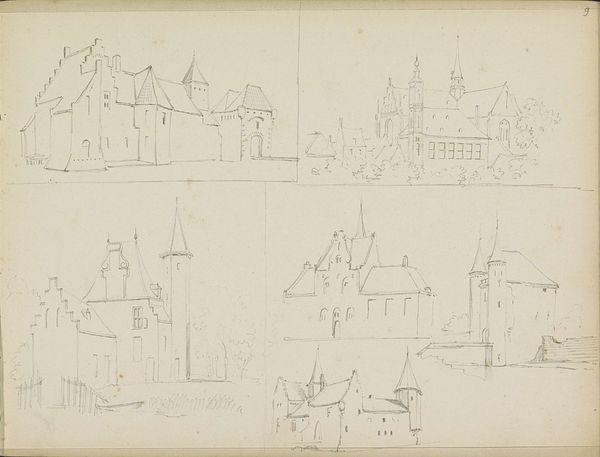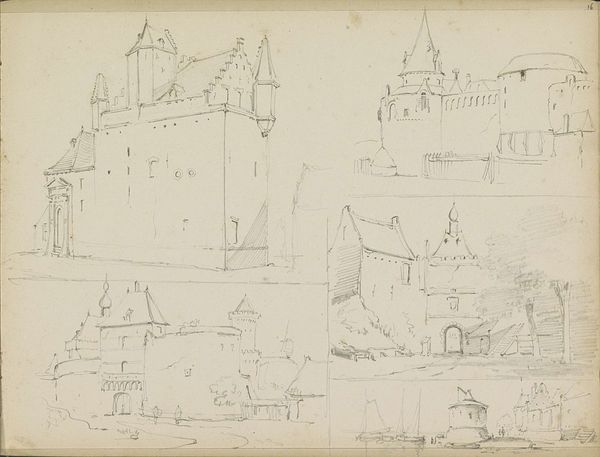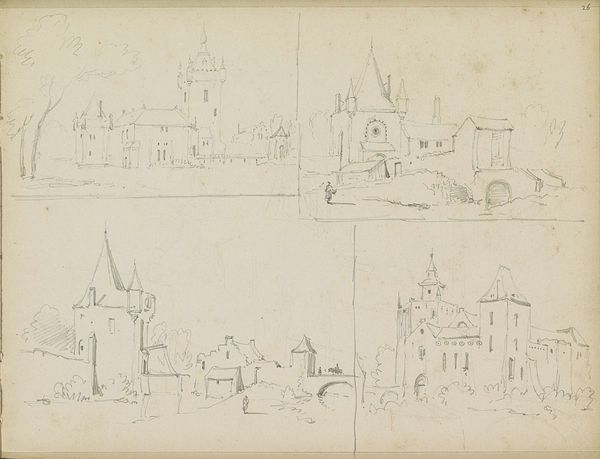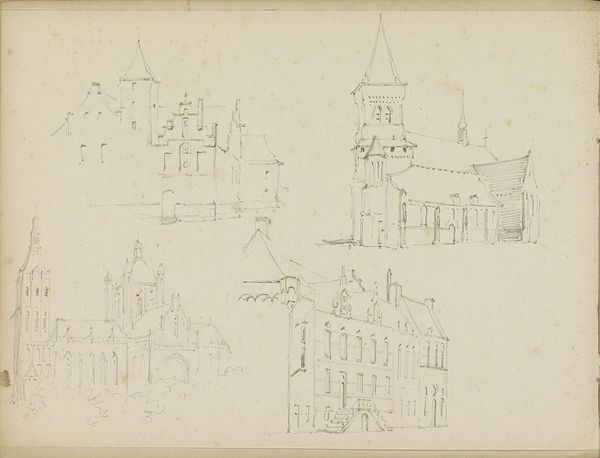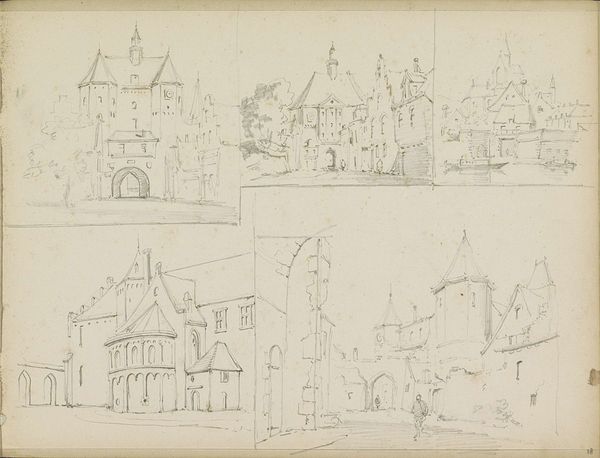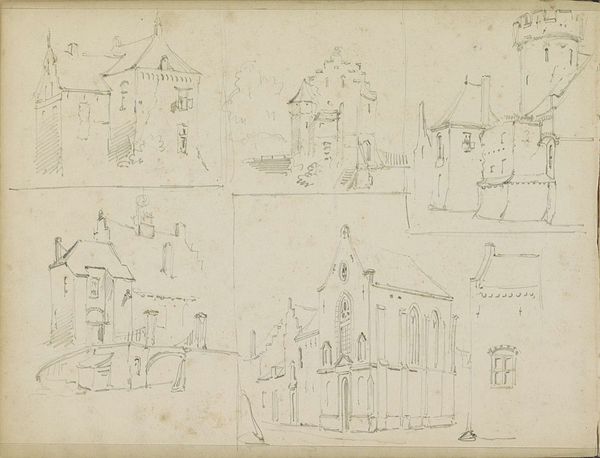
drawing, pencil, architecture
#
drawing
#
landscape
#
pencil
#
cityscape
#
architecture
#
realism
#
building
Copyright: Rijks Museum: Open Domain
Curator: Here we have Adrianus Eversen's "Studieblad met gebouwen," dating roughly from 1828 to 1897. It is a pencil drawing depicting multiple architectural studies. Editor: It's intriguing. My initial reaction is a certain delicacy, despite the solid architectural subject matter. The light pencil work almost lends a dreamlike quality, a fragile vision of steadfast structures. Curator: Eversen’s rendering presents the architecture in a relatively straightforward style. I’m particularly struck by the suggestion of social stratification. Consider the placement of the church alongside what seems to be a domestic dwelling on the same plane versus the tower, perhaps indicative of a fortress, set atop a steeper hill, representing notions of defense and privilege. Editor: Yes, there’s certainly a hierarchy visually reinforced by the composition. But, also note the treatment of line—it’s incredibly precise, particularly in defining the geometries of the roofs and windows. It gives them clarity, a weight almost. Even the slight variations in shading articulate volume, differentiating planes, creating the form. It’s so controlled! Curator: Controlled, yet not without its absences. Observe that most lack specific human presence. This is a strategic decision perhaps to emphasize the architecture as a representation of power structures that dictate the terms of human interactions within their walls. These structures are both material and immaterial, imposing and influential across generations. Editor: That makes sense; but I am still captivated by the tonal qualities, the gradations from pale gray to near-black, creating form but simultaneously muting any emotional charge. A kind of neutral observation... or what seems like neutral observation. It allows the structures to speak for themselves, or for us to ascribe our own meanings based purely on the interplay of lines and shadows. Curator: Indeed. While the absence of explicit sociopolitical commentary could be a stylistic choice, I argue it opens space to reflect on these buildings as spaces shaped by ideological agendas of 19th century society. Editor: And that ambiguity is exactly where the power resides—permitting, even encouraging, interpretations beyond a single, fixed historical reading. The very visual economy invites layered consideration. Curator: Yes, these are architectural spaces not only to be observed but to be engaged as critical sites of historical negotiation. Editor: Ultimately, the power of this sheet of studies lies not in definitive statements, but in opening doors to deeper understanding via detailed observation.
Comments
No comments
Be the first to comment and join the conversation on the ultimate creative platform.
